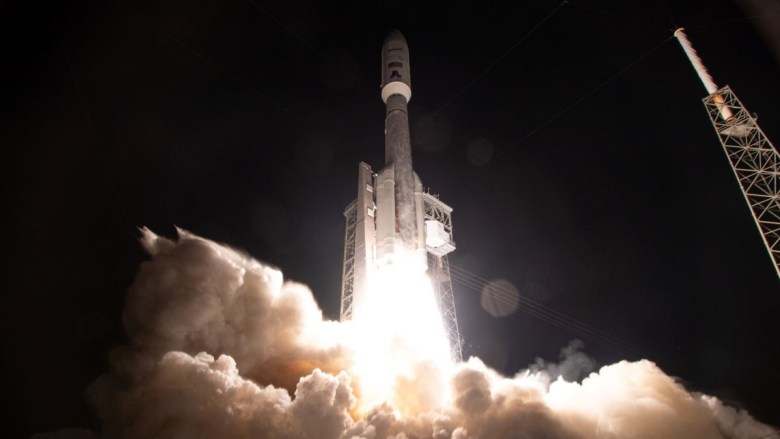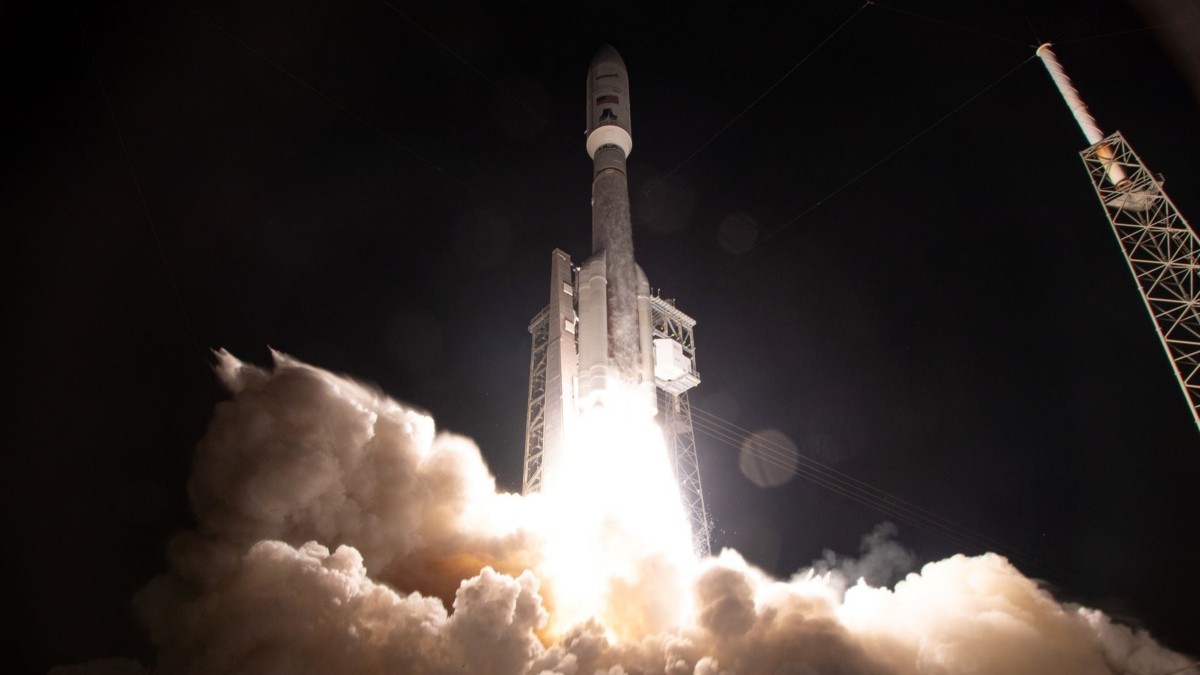 An Atlas V rocket launches Viasat’s latest satellite from Cape Canaveral. (Photo courtesy of the company)
An Atlas V rocket launches Viasat’s latest satellite from Cape Canaveral. (Photo courtesy of the company)
In twin rocket launches on Thursday, Carlsbad-based Viasat‘s latest high-capacity communications satellite reached orbit and the company successfully tested new communications technology for NASA.
The company’s ViaSat-3 Flight 2 satellite launched from Cape Canaveral at 7:04 p.m. Pacific time abroad a United Launch Alliance Atlas V rocket. Three and a half hours later, the satellite separated from the launch vehicle and signaled its successful deployment.
The satellite will be positioned over the Americas to provide internet access for commercial mobility, fixed broadband and defense customers.
“The successful launch and initial signal acquisition of ViaSat-3 F2 are a testament to the dedication and expertise of our Viasat team and partners,” said Chairman and CEO Mark Dankberg. “This cutting-edge satellite will significantly scale our network’s performance and capacity, enabling exciting new connectivity services and supporting our customers’ growing needs across the Americas.”
Hours earlier, Viasat tested a launch telemetry system on Blue Origin‘s giant New Glenn rocket, which lifted off at 12:55 p.m. Pacific time carrying twin probes on a mission to Mars.
“We are thrilled to successfully complete our first demonstration under NASA’s Communications Services Project and show how commercial technologies can help support critical launch telemetry data needs,” said John Reeves, vice president of space and mission systems.
“We’re proud to be partnering with NASA on these near-Earth communications capabilities to help both government agencies and commercial operators benefit from the latest available solutions,” he said. “We’re excited to build on this success and move toward a second demonstration mission with Blue Origin anticipated for early next calendar year.”
Viasat and SpaceX compete in the market for satellite internet. Viasat’s system relies on large satellites in geostationary orbits, while Starlink from SpaceX uses thousands of small satellites in lower orbits.
The Carlsbad company’s communications service is used by many airlines for onboard internet access.
READ NEXT
